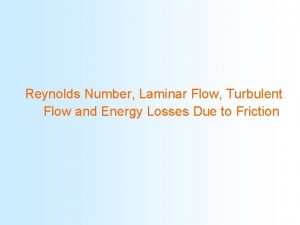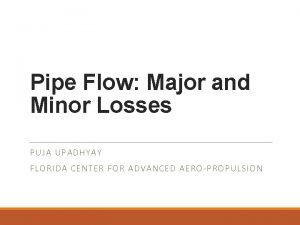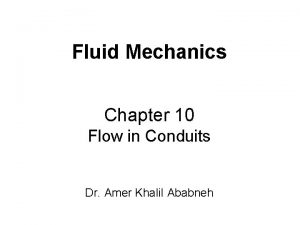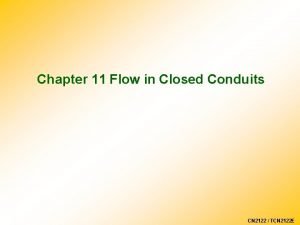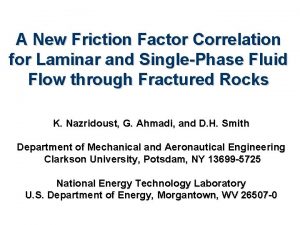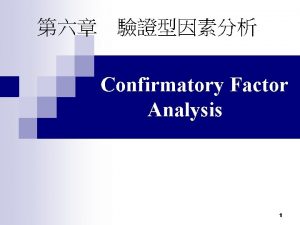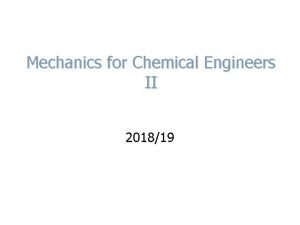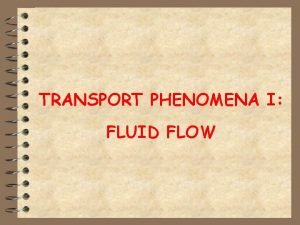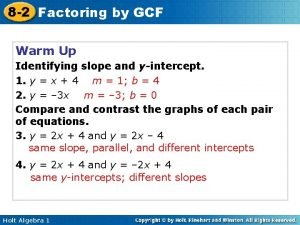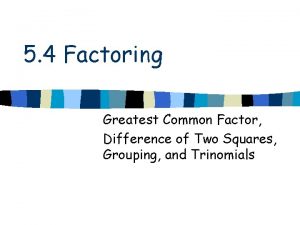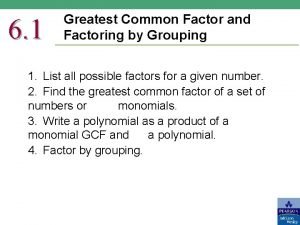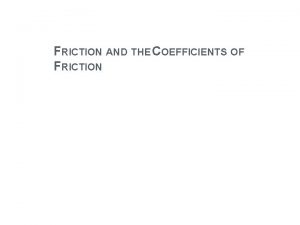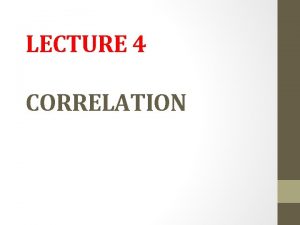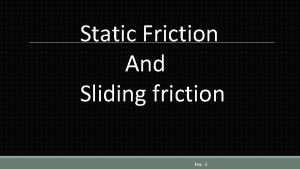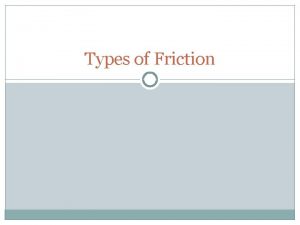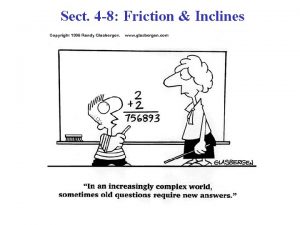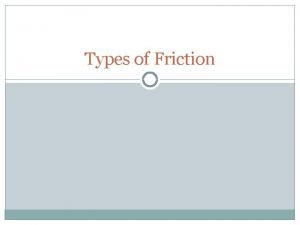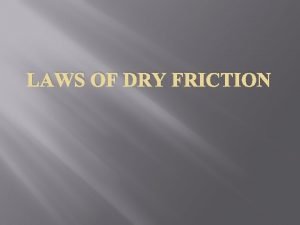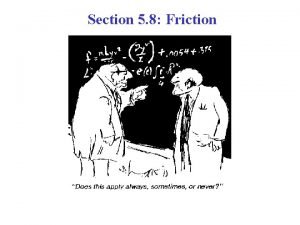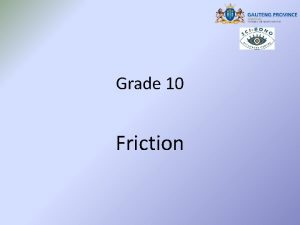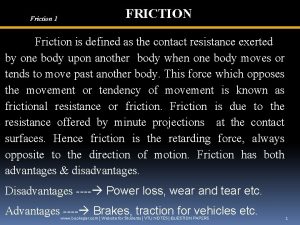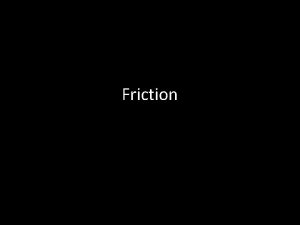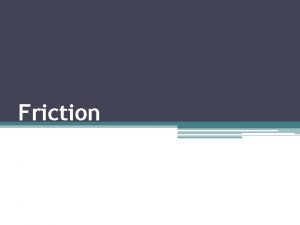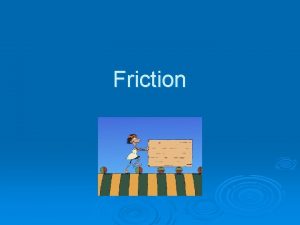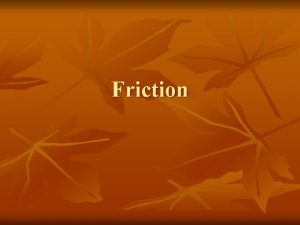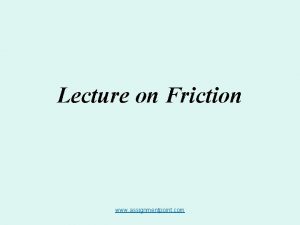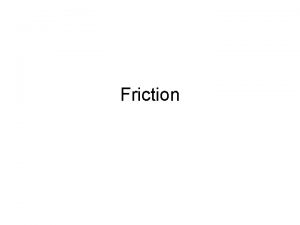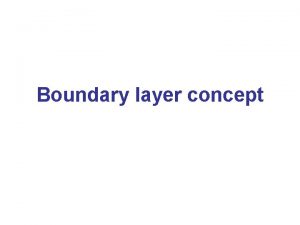A New Friction Factor Correlation for Laminar and







































- Slides: 39

A New Friction Factor Correlation for Laminar and Single-Phase Fluid Flow through Fractured Rocks K. Nazridoust, G. Ahmadi, and D. H. Smith Department of Mechanical and Aeronautical Engineering Clarkson University, Potsdam, NY 13699 -5725 National Energy Technology Laboratory U. S. Department of Energy, Morgantown, WV 26507 -0

Outline Ø CT Scanning Procedures of Fractured Rocks - Geometric Features of Fractures Ø Single Phase Flows through Fractures - Velocity and pressure contours Ø Gas-Liquid Flows - Water Flooding in Oil Saturated Fractures Ø Conclusions

C. T. Scanning of Fractured Rocks

HD-250 Medical C. T. Scanner 0. 5 mm

Pore Space Rendering

OMNI-X High Resolution Industrial Scanner

OMNI-X Scanner - Penn State Source Detector Rock sample in the pressure vessel

Healed Natural Fracture Open Artificial Fracture

Induced Fracture

Fractures Topology Sample diameter is 25 mm. Inset size is 5 x 5 mm.

aperture Extracting Digital Fracture length

Fracture/Sections C. T. Scan Images 240 Micron Resolution

Fracture Sections

Fracture Sections No-slip Wall Inlets

Governing Equations Continuity Momentum Parallel Plate Model, Laminar Flow For ith passage : Tortuosity Friction Factor Average aperture height

Tortuosity

Frequency – Passage Height Distribution Fracture Section Avg. Aperture Height, Havg. ( m) Std. Deviation ( m) Avg. – Std. Deviation ( m) Section (a) 606 302 304 Section (b) 573 296 277 Section (c) 590 304 282 Section (d) 637 325 312 Tortuosity 0. 1457 0. 1705 0. 1513 0. 1533

Pressure for different flow rates, Section (a) - Air

Pressure for different flow rates, Section (a) - Water

Velocity Magnitude, Section (a) - Air

Pressure Drop Air Water

Friction Factor for Laminar Flow between Parallel Plates Friction Factor for Laminar Flow in Fractures

Friction Factor

Pressure Drop Ratio - Air

Pressure Drop Ratio - Water

Two-Phase Flows Water-Oil

Volume Fraction during Water Flooding Water Oil

Velocity Magnitude Contours During Water-Oil Flow on a Plane across Fracture Shaded region is the fracture opening which is made transparent so that the flow can be observed. White regions are rock. The contours are shown on a plane through the fracture.

Volume Fraction of Oil During Water-Oil Flow on a Plane across Fracture

Computational Grid – 3 D – 37 mm

Volume Fraction of Oil

Two-Phase Air-Water Flows though a Multi-Branch Fracture

Natural Multi-Branch Fractures

Air-Water Flow in a Multi-Branch Fracture Velocity Magnitude Contours Air Volume Fraction Contours

Air-Water Flow in a Multi-Branch Fracture Air Volume Fraction Contours

Air-Water Flow in a Multi-Branch Fracture Water Volume Fraction Contours on a Plane

Air-Water Flow in a Multi-Branch Fracture Velocity Magnitude Contours on a Plane

Conclusions Ø The computer simulation technique is capable of capturing the features of the flow through the fracture. Ø The simulation results are in qualitative agreement with the parallel plate model. Ø The newly proposed empirical equation for fracture friction factor provides reasonably accurate estimates for the pressure drops in fractures for range of Reynolds numbers less than 100. Ø A significant portion of the fracture pressure drop occurs in the areas with smallest passage aperture.

Conclusions Ø The order of the magnitude of the pressure in various sections of the fracture is consistent with the number of passages with smallest aperture that are present in those sections. Ø The tortuosity of the fracture passage is an important factor and needs to be included in the parallel plate model.
 Friction factor for laminar flow
Friction factor for laminar flow Critical reynolds number
Critical reynolds number Wall shear stress formula
Wall shear stress formula Closed conduits
Closed conduits Friction factor for laminar flow
Friction factor for laminar flow Positive correlation and negative correlation
Positive correlation and negative correlation Positive correlation versus negative correlation
Positive correlation versus negative correlation Low and high friction
Low and high friction Factor correlation matrix
Factor correlation matrix Fluids mechanics
Fluids mechanics Blasius equation friction factor
Blasius equation friction factor Constant phase difference
Constant phase difference Gcf 54 and 27
Gcf 54 and 27 Definition of turbulent flow
Definition of turbulent flow Fluid definition
Fluid definition Factoring in algebra
Factoring in algebra Factor out the greatest common factor
Factor out the greatest common factor Non-researchable questions
Non-researchable questions Factoring greatest common factor
Factoring greatest common factor Kontinuitetshantering
Kontinuitetshantering Typiska novell drag
Typiska novell drag Tack för att ni lyssnade bild
Tack för att ni lyssnade bild Returpilarna
Returpilarna Shingelfrisyren
Shingelfrisyren En lathund för arbete med kontinuitetshantering
En lathund för arbete med kontinuitetshantering Personalliggare bygg undantag
Personalliggare bygg undantag Tidbok yrkesförare
Tidbok yrkesförare A gastrica
A gastrica Vad är densitet
Vad är densitet Datorkunskap för nybörjare
Datorkunskap för nybörjare Tack för att ni lyssnade bild
Tack för att ni lyssnade bild Debatt mall
Debatt mall Autokratiskt ledarskap
Autokratiskt ledarskap Nyckelkompetenser för livslångt lärande
Nyckelkompetenser för livslångt lärande Påbyggnader för flakfordon
Påbyggnader för flakfordon Vätsketryck formel
Vätsketryck formel Publik sektor
Publik sektor Jag har gått inunder stjärnor text
Jag har gått inunder stjärnor text Presentera för publik crossboss
Presentera för publik crossboss Argument för teckenspråk som minoritetsspråk
Argument för teckenspråk som minoritetsspråk
